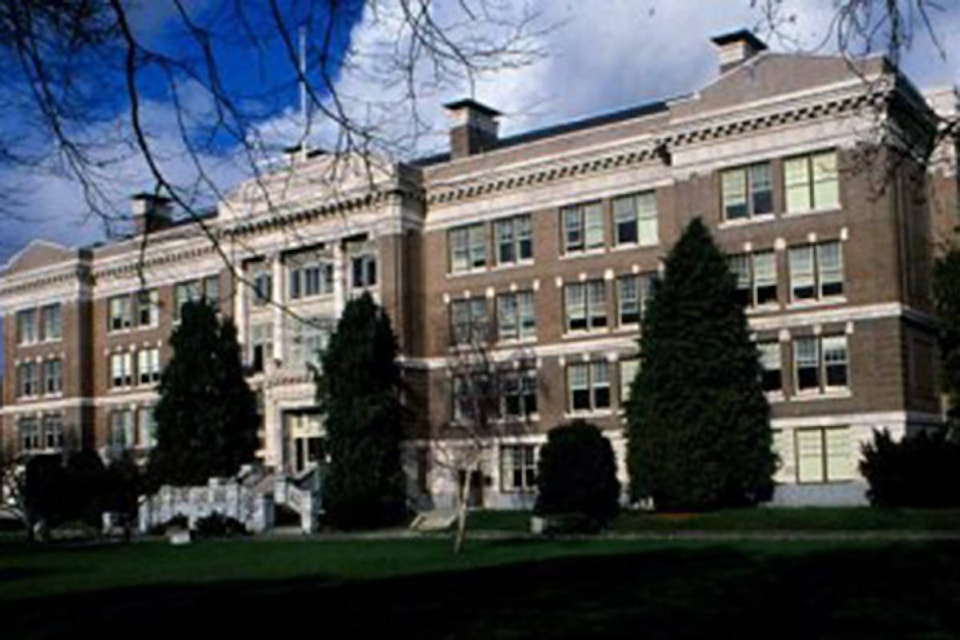Before residents weigh in on the future of Victoria High School, they should take an evidence-based approach and read the facts provided by Greater Victoria School District 61.
The Long-Term Facilities Plan (2017) and School Specific Plans at sd61.bc.ca are troubling. It concludes district facilities are in dire condition. Twenty-seven of 55 active school buildings are rated in critical condition. The deferred maintenance, based on B.C. Ministry of Education data, was $149 million in 2017 and growing.
In addition, projecting forward with current funding levels, 48 of 57 K-12 schools (84 per cent) will be rated as critical in the next 10 years. Four administrative facilities and six inactive schools are rated in critical condition.The average age of facilities in the province is 43 years, compared to 62 years in the district.
When adopted, the updated B.C. Building Code includes a new seismic standard that will affect the ratings of all schools, potentially adding a number of schools to the high-risk category for upgrading, and possibly requiring the district to revisit some schools previously upgraded.
The future costs to the taxpayer are daunting.
Vic High, built in 1914, absolutely must be seismically upgraded or replaced. The B.C. Seismic Ranking Program ranks Vic High at the highest risk of widespread damage and structural failure. But the district has presented only three options to the public as it deliberates what it will do with Vic High in June. All estimates are between Class C or D and considered preliminary.
To house 800 students, the district could make seismic upgrades and improvements for $60 million to $70 million to the existing structure. Or it could preserve the exterior and do a wholesale renovation of the interior for about $110 million. Not unlike an old home reno, those renovations could cost much more than estimated.
Tearing down the old building and putting up a new school for $50 million to $60 million for 1,000 students is the most rational thing to do. Not only would it accommodate students on waiting lists, its lifespan would likely be longer and there would be operating and maintenance cost savings.
Perhaps, though, a fourth option should be considered that would still make economic sense while respecting and honouring the heritage of Vic High.
Architects could integrate heritage features of the existing Vic High, such as the two ornate facades, the large windows and the two war memorials in the entrance. Bricks could be sold to build a courtyard or for the alumni to fund extracurricular programs. The four-foot square granite blocks in the structure could highlight design elements.
The best legacy for the old Vic High is making a sensible decision, one that would respect taxpayers by saving $60 million or more, and yet accommodate increasing enrolment.
Consider the $51.6-million Oak Bay High that opened in 2015, replacing the old school that dated back to 1929. Built to the highest environmental standards to reduce operating costs, the new building required reusing and recycling existing building materials, and has a major reduction of its carbon output to meet Gold LEED certification. The community-at-large also benefits from various services within the facility.
There are many other students here (and elsewhere) who are on waiting lists, studying in portables, or housed in substandard schools that urgently need maintenance or seismic upgrades. How does the quality or condition of facilities affect their academic outcomes?
Considering there are many pressing educational needs in the district and province – especially now with teacher contract negotiations impending – this large expenditure of public funds demands a prudent and sensible decision.
Stan Bartlett is chair of the Grumpy Taxpayer$ of Greater Victoria.



